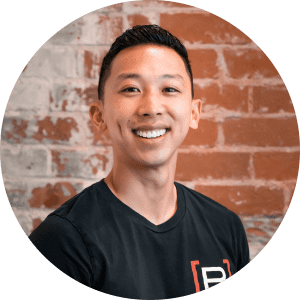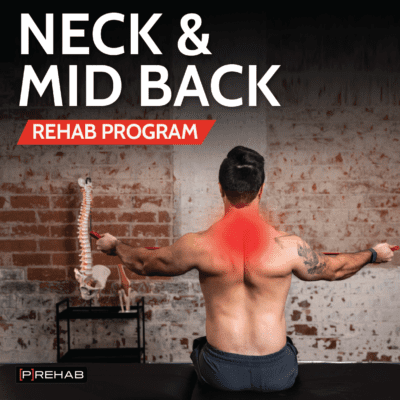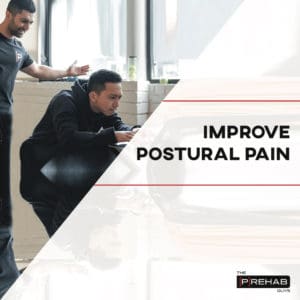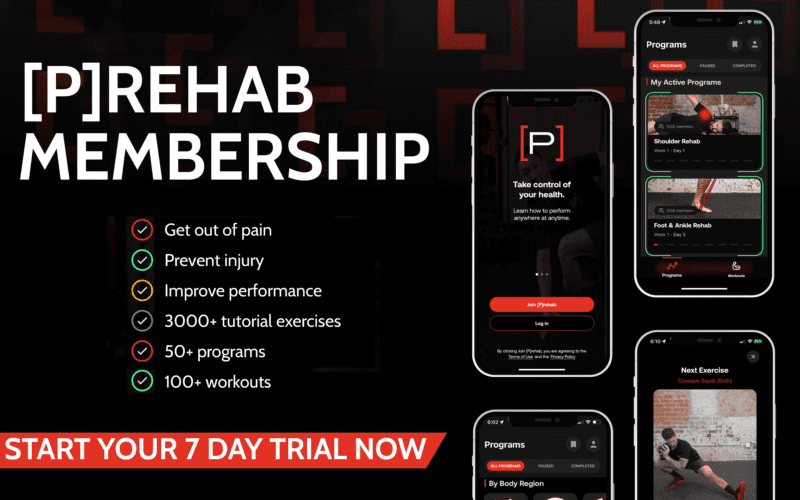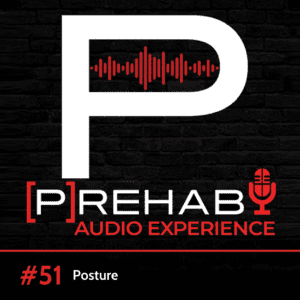Do you have a headache after a whiplash injury? Do you experience pain that seems to start in the neck and then spread to one side of your head or arm? Does moving your head seem to start your headache or exacerbate your pain when you have a headache? If you answered yes to any of those questions, there’s a high chance you have a type of headache known as a cervicogenic headache. Lucky for you, there are extremely effective interventions for you including cervicogenic headache exercises!. In this article, you will learn everything you need to know about cervicogenic headache exercises so that you can start to feel better!
First Understand The Anatomy and Physiology
What distinguishes a cervicogenic headache from your classic headaches like migraines or tension-type headaches is that cervicogenic headaches are actually caused by dysfunction(s) in your neck. Cervicogenic headaches are a form of referred pain – meaning that although the source of the pain is in the cervical spine, the sensation of pain is felt in the head as a headache. This happens because there are nerves in the upper cervical region (C1, C2, and C3) that have connections to nerves of the head (cranial nerve V via the trigeminal nerve spinal tract).
Overcome Your Headaches And Neck Pain With Our Program!
Dealing with headaches and/or neck pain? Many individuals have been able to overcome headaches related to neck pain with our program. The best part, is you get to do it at the tip of your fingers, on your own time! Join us today.
Although some controversy exists, a vast majority of the literature agrees that the most common cause of cervicogenic headaches is dysfunction from the C2-3 zygapophysial joints (facet joints). However, there is also literature to support that cervicogenic headaches can arise from dysfunction in the C2-3 and C3-4 intervertebral discs of facet joints, as well as the atlantoaxial (C1-2) and atlanto-occipital (C0-1) joints. The most common causes of these upper cervical dysfunctions are whiplash-associated trauma as well as prolonged neck flexion or poor static postures
READ: IMPROVE POSTURAL PAIN
Consider A Pro If & When Needed
See your local physical therapist. They can create a specific plan of care tailored to treat your upper cervical dysfunction. A recent systematic review in 2013 by Racicki et al came to the conclusion that “conservative physical therapy treatment techniques are effective interventions for decreasing cervicogenic intensity and frequency, as well as neck pain.” In particular, utilizing a combination of mobilization, manipulation, and cervicogenic headache exercises like cervico-scapular strengthening exercises, are the most effective intervention based on the results of that systemic review.
Manual Therapy
A well-trained physical therapist will examine your neck to see if there are any impairments or issues with the cervical facet joints specifically at the segments we mentioned above. Typically, palpation of the dysfunctional segment will recreate symptoms similar to the headache you experience, letting the physical therapist know that he or she is in the right spot. From there, a physical therapist may perform soft tissue mobilization to the suboccipital muscles with the intention of relaxing them. You can’t address the dysfunctional joints if the muscles around them are tense and guarded! From there, a physical therapist can either employ joint mobilizations or manipulation of the troublesome segments.
Upper Cervical Soft Tissue Work, Mobilization, and Manipulation
In the video above, Mike demonstrates a general upper cervical manipulation. While manual therapists like to be as specific as possible with their joint mobilizations, it’s difficult to say whether we are gapping C0-C1 or C1-C2 or even C2-C3 joint. Next, I demonstrate some general soft tissue mobilization to obliquus capitis superior and inferior. Finally, I demonstrate one of many ways to mobilize the C0-C1 joint. The particular technique shown is a mobilization of the occiput, while stabilizing at the transverse process of the atlas.
Say Goodbye To Your Headaches!
Sustained Natural Apophyseal Glides (SNAGs)
Following manual therapy, a physical therapist should teach you how to perform a Sustained Natural Apophyseal Glide, or SNAG, for short. This SNAG cervicogenic headache exercise is a way to provide yourself with your own form of manual therapy. Essentially this exercise mimics the manual therapist’s hands and provides a joint mobilization to the joint.
Sustained Natural Apophyseal Glides (SNAGs)
Sample Neck And Headache Programming Exercise
To perform:
- Use the EDGE of a towel. Using the edge, and not the middle of a folded up towel is important as you don’t want the towel to slip off of your skin.
- Place the edge of the towel on the desired segment.
- Anchor the towel with the hand on the same side as your troublesome segment as shown.
- With your opposite hand, reach up and grab the edge of the towel. If you give it a slight tug, you should feel a pulling/stretching sensation behind your neck at the segment. You should not feel any of your symptoms.
- While pulling the towel (towards your opposite ear), turn your head towards your hand at the same time and hold this position for 3 seconds. Only turn your head in your pain-free range of motion. Your line of pull should be horizontal, to just below the eye (I said towards the eye in the video on accident)
- That’s 1 rep. Now repeat 10 times.
- Perform this exercise twice a day.
BE GENTLE! At this point, we don’t know if you’re treating the right segments or even the right problem in the first place! If you think you have a cervicogenic headache, it may be worthwhile to go schedule an appointment with your local physical therapist.
The Prehab membership is the anti-barrier solution to keeping your body healthy. Access state-of-the-art physical therapy, fitness programs, and workouts online in the comforts of your own home or gym! Taking control of your health with exercise & education from the palm of your hand has never been easier. Get access to 50+ programs, 100+ unique workouts, and 3000+ exercises to build your own workout routines. Trial it for free, and learn how to get out of pain, avoid injury, and optimize your health with [P]rehab!
Neuromuscular Re-Education & Strengthening
Last but not least, you need to follow up manual therapy with some cervical and scapular strengthening as well as postural re-education. We’ll highlight a few of our favorite “bang-for-your-buck” exercises that accomplish both strengthening and postural re-education as shown below.
Deep Neck Flexor and Extensor Exercises
Sample Neck & Headache [P]rehab Program Exercise
While training the deep neck flexors in patients with cervicogenic headaches or neck pain is important, we believe that the deep neck extensors are far too often forgotten during rehabilitation. The deep cervical extensors (semispinalis cervicis, multifidus, and rotators) along with the craniocervical extensors (rectus capitis posterior major/minor and obliquus capitis superior/inferior) are key muscles for cervical spine segmental support due to their relatively small moment arms, attachments to adjacent vertebrae, and their high proportion (~70%) of slow-twitch muscle fibers.
To perform:
- Start in the quadruped position, watch this video to see how to properly engage the scapular stabilizers in quadruped
- Start first with a chin tuck in the quadruped position. This will activate your deep neck flexors. You should be able to see wrinkles in your chin.
- While maintaining the chin tuck, work slow and controlled into cervical flexion. Cue here is to “use your eyes” to follow an object (iPhone shown in video)
- Now here comes the best part of the exercise, the cervical extensors are already engaged in the quadruped position simply due to gravity. However, we can further preferentially activate the deep neck extensors in a segmental fashion on the return from cervical flexion (see video). Cue here with manual resistance at the spinous process or articular pillars.
Start with low load exercises like this one with the aim of inducing neurophysiological adaptations by specifically activating deeper muscles it the cervical spine. Then, progress to high-load exercises with the aim of inducing morphological adaptations in order to increase the strength and endurance of the selected muscles and movements.
LISTEN: HOW TO IMPROVE YOUR POSTURE HABITS
Supine Chin Tuck
Sample Neck & Headache Rehab Program Exercise Video
Relaxing The Upper Traps
According to Cools et al. (2014), “the prevalence of neck and shoulder pain is known to increase with computer workload. There is a strong relationship between chronic neck and shoulder pain and dysfunction of the scapula. The scapula functions as a ‘bridge’ between the shoulder complex and the cervical spine and plays a very important role in providing both mobility and stability to the neck/shoulder region.” According to Bogduk and Govind (2009), “noxious stimulation of the atlanto-occipital and lateral atlanto-axial joints, the C2–3 zygapophysial joint, and the C2–3 intervertebral disc can produce pain in the occipital region.” We also know the upper trapezius muscle originates from the occipital bone and upper cervical C1-C3 spinous processes. Taking this information into consideration, it would be wise to address the upper trapezius for trigger points, muscle length deficits, and/or overuse.
The goal of this exercise is to primarily inhibit the upper traps from working. To promote muscular inhibition, you want to cue the shoulder blades into depression and downward rotation as this is the opposite muscle action of the upper traps. Keep your neck ‘long and relaxed’ during this exercise. If you feel your head rising off the table and wanting to extend, take a break and try again with less force.
To perform this exercise:
- Lay on your stomach and get into a comfortable position. Consider a pillow under your stomach, or under your chest, if your spine goes into excessive lordosis or kyphosis when you lay on your stomach.
- Rest your forehead on your head and relax your arms on the table. Your head and arms should be fully supported so that you can relax.
- Push your hands into the table and pull your shoulder blades down towards your feet.
- Hold this position for 5s, and repeat for a total of 5 reps.
- Your neck and the region of the upper traps should be relaxed while you perform this exercise.
Postural Awareness
As always, maintaining good posture while seated for countless hours at work is always beneficial. Not just for cervicogenic headache prehab, but also for overall musculoskeletal health!
Brueggers
Sample Neck & Headache Programming Exercise
Closing Thoughts
According to the literature, most patients treated conservatively with physical therapy see significant improvements in headache frequency, duration, and intensity within the first four weeks, so don’t be dismayed if you don’t see immediate results!
In summary, cervicogenic headaches are a particular subset of headaches that are caused by dysfunction in the upper cervical spine. Dysfunctional segments can be made functional again with manual therapy techniques such as soft tissue mobilizations or joint mobilizations and manipulation. Manual therapy should always be followed up with exercise. In the case of upper cervical manual therapy, SNAGs are the perfect exercise to combat cervicogenic headaches. Last but not least, strengthening the cervical and scapular muscles in addition to facilitating proper posture, are imperative in keeping your headache at bay.
Get Rid Of Your Pain For Good!
Neck and Mid-back pain truly lets you know how connected the movement system is. It can create discomfort not just in that area but can refer uncomfortable sensations down the arms, around the ribs, or even wrapping around the head. This can be resolved by improving neural mobility, and postural control, and strengthening the unique muscles in this region.
References
- , et al 2014. Rehabilitation of scapular dyskinesis: from the office worker to the elite overhead athlete.
- Hall, Toby, Ho Tak Chan, Lene Christensen, Britta Odenthal, Cherie Wells, and Kim Robinson. “Efficacy of a C1-C2 Self-sustained Natural Apophyseal Glide (SNAG) in the Management of Cervicogenic Headache.” Journal of Orthopaedic & Sports Physical Therapy 37.3 (2007): 100-07. Web.
- Jull, Gwendolen, Patricia Trott, Helen Potter, Guy Zito, Ken Niere, Debra Shirley, Jonathan Emberson, Ian Marschner, and Carolyn Richardson. “A Randomized Controlled Trial of Exercise and Manipulative Therapy for Cervicogenic Headache.” Spine 27.17 (2002): 1835-843. Web.
- Racicki, Stephanie, Sarah Gerwin, Stacy Diclaudio, Samuel Reinmann, and Megan Donaldson. “Conservative physical therapy management for the treatment of cervicogenic headache: a systematic review.” Journal of Manual & Manipulative Therapy 21.2 (2013): 113-24. Web.
- Schomacher, Jochen, and Deborah Falla. “Function and Structure of the Deep Cervical Extensor Muscles In Patients with Neck Pain.” Manual Therapy 18.5 (2013): 360-66. Web.
About The Author
Michael Lau, PT, DPT, CSCS
[P]rehab Co-Founder & Chief Product Officer
